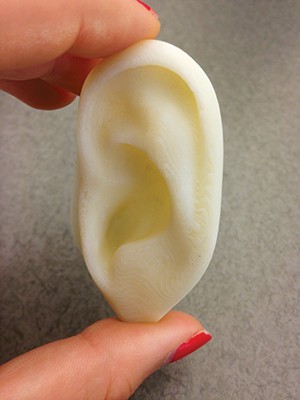December 28, 2015 - New, eye-popping medical technology provides earlier diagnoses, personalized treatments and a breathtaking range of other benefits for both patients and health care professionals.
The scope of these emerging technologies is breathtaking. High-tech sensors soon will monitor the at-home cardiac patient’s heart every minute of every day. A new type of chip, embedded in a pill will be activated at the precise moment it reaches a patient’s stomach, and will confirm for the medical record that he’s taking his medications. Straight out of science fiction, new gizmos will emerge that can scan a body for a host of symptoms without poking or prodding and, in seconds, they’ll make a diagnosis.
Every geek’s jaw dropped at the sight of the 3-D printer when it first came to market. These days, medical researchers are harnessing its potential to vastly improve patient care. For example, Kaiser Permanente’s Los Angeles Medical Center is perfecting the use of 3-D printers to produce exact, multidimensional models of trouble spots inside patients. Surgeons can scrutinize and handle the models, then simulate a variety of possible procedures before ever going into the operating room.
This technology’s potential was dramatically demonstrated when a Kaiser patient suffered a tear in the wall of his aorta, the main artery leading out of his heart. The clinical team “printed his artery in 3-D and actually went through several different scenarios on how they could insert a stent to prevent further rupture,” Chai says. “They used that in a team-based training environment to see how they could confidently proceed with some of these special procedures.” Chai compares the process with a flight simulator in which a pilot masters the intricacies of the cockpit before entering a real one. The innovation “allows us to develop a more specialized, personalized, precise treatment plan,” Chai explains. “Ultimately, that improves the quality and affordability of care.” The patient, by the way, came through the procedure fine and is recovering.

Last year, Cornell University scientists used a 3-D printer to produce an artificial ear that, according to Randy Reiland’s January 2014 report in Smithsonian.com, “looks and works like the real thing.” Reiland notes that researchers at the University of Pennsylvania and Massachusetts Institute of Technology have bioprinted blood vessels; their counterparts at Wake Forest University developed a method for printing skin cells directly onto wounds. And a company called Organovo has come up with a 3-D printed liver. Next up? According to Bernard Meyerson, writing for weforum.com, a 4-D printer is being developed capable of creating products that can alter themselves in response to environmental change, such as heat and humidity. That could be useful for things like clothes and footwear, Meyerson points out, and also for “health care products, such as implants designed to change in the human body.”
Source: Smithsonian.com, Jan. 6, 2014; World Economic Forum, weforum.org, March 4, 2015
For the full article, go to: http://bit.ly/1Psvub5




